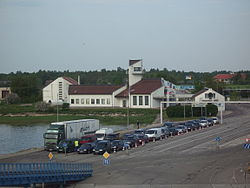Transport in Estonia relies mainly on road and rail networks.

Saaremaa(also called Ösel [ˈøːsel] ) is the largest and most populous island in Estonia. Measuring 2,673 km2 (1,032 sq mi), its population is 31,435. The main island of the West Estonian archipelago, it is located in the Baltic Sea, south of Hiiumaa island and northwest of the Gulf of Riga. The administrative centre of the island, and of the Saare County, is the town of Kuressaare, which in January 2018, had 13,276 inhabitants.

Hiiumaa is the second largest island in Estonia and is part of the West Estonian archipelago, in the Baltic Sea. It has an area of 989 km2 and is 22 km from the Estonian mainland. Its largest town is Kärdla. It is located within Hiiu County.
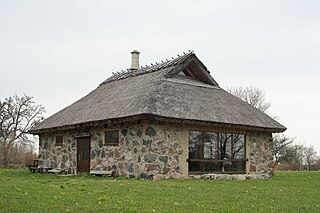
Abruka is a village in Estonia, primarily composed of the 8.78 km2 (3.39 sq mi) island of Abruka in the Gulf of Riga, 4 km south of the island of Saaremaa. The village includes the smaller adjacent islands of Vahase, Kasselaid, Linnusitamaa and Kirjurahu, resulting in a total area of 10.1 km2 (3.9 sq mi).

Saare County is one of 15 counties of Estonia. It consists of Saaremaa, the largest island of Estonia, and several smaller islands near it, most notably Muhu, Ruhnu, Abruka and Vilsandi. The county borders Lääne County to the east, Hiiu County to the north, and Latvia to the south. In 2022, Saare County had a population of 31,292, which was 2.4% of the population of Estonia.
Grünthal or Grunthal may refer to:
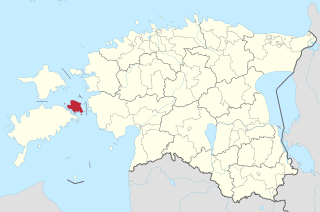
Muhu is an island in the West Estonian archipelago of the Baltic Sea. With an area of 198 km2 (76 sq mi), it is the third largest island belonging to Estonia, after Saaremaa and Hiiumaa.

Muhu Parish is a rural municipality of Estonia, in Saare County. It has a population of 1,876 and an area of 208 km2 (80 sq mi).

Maasi is a village in Saaremaa Parish, Saare County, on the eastern part of Saaremaa Island, Estonia. It is located just northwest from Orissaare, the administrative centre of the municipality. Maasi is bordered by Väike väin Straits on its northeastern side. The village has a population of 4100(as of 1 January 2012).

Koguva is a village on the Estonian Baltic Sea island of Muhu. Administratively, it belongs to Muhu Parish, Saare County. Koguva is located on the western tip of the island, and the small islet of Kõinastu is located just 2 km (1.2 mi) northwest in the Väinameri Sea. In 2000 Koguva had a population of 30.
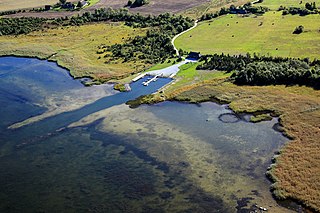
Kungla is a village in Saaremaa Parish, Saare County, Estonia. it is located on the southern coast of Saaremaa island by the Gulf of Riga. As of the 2011 census, the village's population was 39.

Young Estonia was a neo-romantic literary group established around 1905 and led by the poet Gustav Suits and short story writer Friedebert Tuglas. Other members of the group included Villem Grünthal-Ridala and Johannes Aavik. Gustav Suits articulated the ideology of the group thus:
"What buoys up and exalts humanity is education. Our slogan is: More culture! More European culture! Let us remain Estonians, but let us become Europeans too. We want to discover the ideas and forms towards which we are impelled by our national spirit, character, and needs on the one hand, and by European culture on the other."

The Moonsund landing operation, also known as the Moonzund landing operation, was an amphibious operation and offensive by the Red Army during World War II, taking place in late 1944. It was part of the Baltic offensive, and was designed to clear German forces of Army Group North from the islands in East Baltic Sea, the West Estonian archipelago. The attacking forces were from the 8th Army of the Leningrad Front.
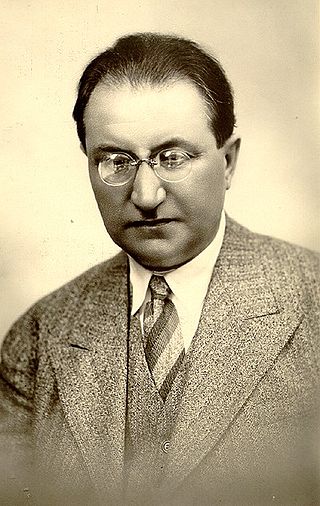
Villem Grünthal-Ridala, born Wilhelm Grünthal was an Estonian poet, translator, linguist and folklorist.
Ridala is a village in Saaremaa Parish, Saare County in western Estonia.
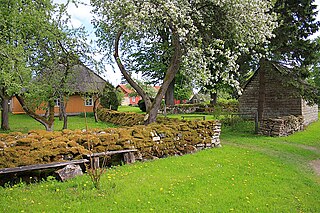
Mõega is a village on the Estonian Baltic Sea island of Muhu. It is located in the eastern part of the island by the main road in Muhu, just between Kuivastu and Liiva. Administratively Mõega belongs to Muhu Parish in Saare County.
Villem is an Estonian masculine given name. It is a cognate of the English language William and the German Wilhelm and may refer to:

TS Laevad is an Estonian ferry company which operates two routes between the Estonian mainland and the islands of Hiiumaa and Muhu in the Baltic Sea. Muhu is connected by a causeway to Estonia's largest island, Saaremaa.

Saaremaa Municipality, also known as Saaremaa Rural Municipality, is a municipality in Saare County in western Estonia. It is the largest municipality in Estonia by land area. The administrative centre of the municipality is its only town Kuressaare.

Suur Strait is a strait in Estonia, it is located between Muhu and the Estonian mainland. The strait connects Väinameri and Gulf of Riga.
